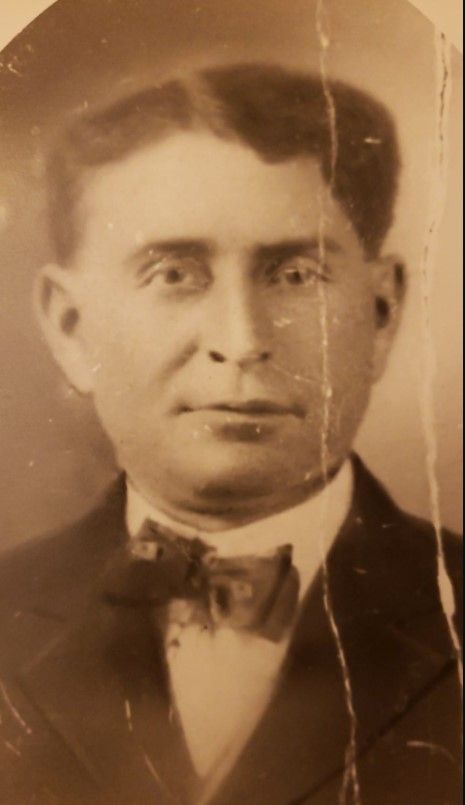Rum runner, bootlegger, speakeasy, bathtub gin. All of these words and phrases are synonymous with American Prohibition, a failed social experiment that began in 1920 and ended in failure in 1933. Probably every family in Ogdensburg has a story or two about relatives being involved in making, smuggling, or transporting illegal liquor during this time period. Outlawing alcohol was supposed to lead to a decrease in domestic violence and other criminal activity, but normally law abiding citizens in Ogdensburg and northern New York state began earning extra money by making or transporting alcohol. One of those citizens was Adolphus “Duff” Kiah and his story is not unusual – except that he failed to return home.
At 5 a.m. on December 5, 1927, Duff Kiah and John Valois, who ran a pool hall, set out across the St. Lawrence River in a rowboat. It was cold and dark with a northwest wind and rough water. The men were accompanied by another man named Dan Davis. The two men never returned. It was Davis who drove John Valois’ car home when the two men failed to return.
Prohibition was in full swing. It was illegal to make, sell, or transport alcohol and all along the border, families were making bathtub gin at home and crossing into Canada to buy booze for resale in their dry hometowns.

There were stories of car chases, crossing the ice with toboggans, punts, and even airplanes. The story of Duff Kiah was not unusual until his disappearance. Duff was my great grandfather and I grew up hearing stories about him being a “hackman” (a taxi driver and delivery man) and a bootlegger. During Prohibition, Duff, like many other people in Ogdensburg, took advantage of the closeness of Canada to smuggle liquor across the border. Sometimes, according to family legend, he hid bottles of booze underneath a load of stone in his hack. Customs agents did not want to unload the stone to check for alcohol, so he was never caught. Sometimes he took a rowboat bringing booze back and stored it in his shed. He told his children never to go into the shed. Supposedly this liquor was sent to Al Capone, although I’ve found no evidence of this.
In the United States, modern Prohibition was born from the Temperance Movement. At the turn of the 20th century, there were temperance societies across the US. Largely led by women, these societies sought to rid society of the “demon rum”. Alcohol was seen as the cause of a host of problems, including domestic violence. Later, the Anti-Saloon League began to attack the sale of liquor, which eventually led to ratification of the 18th Amendment to the Constitution in 1920. From the beginning, there were problems enforcing the amendment, even after passage of the Volstead Act. In places like northern New York, Prohibition led to an exponential rise in crime.
Newspapers of the time were filled with stories of cars being confiscated, homes being raided, and boats missing from camps. It seemed as if everyone was involved in smuggling liquor. Finally in 1933, the 21st Amendment ended the failed experiment called Prohibition.
In 1920, it seemed clear that Ogdensburg bars were openly disobeying the law when a sailor, who had imbibed alcohol at three different establishments, drowned in the St. Lawrence River. The editor of The Ogdensburg advance and St. Lawrence weekly Democrat pointed out that law enforcement officials were not enforcing the new local law and that the bootleggers who were prosecuted were only fined $25 or $50, which was a pittance compared to what they could make smuggling booze.
While the consumption of alcohol in Ontario was illegal at virtually the same time, the export of alcohol was not. So entrepreneurs near Ottawa operated wineries, distilleries, and breweries that made alcoholic beverages for overseas markets, which included the United States. In a hidden shack south of Ottawa, these entrepreneurs made “Pokey Moonshine” that was packed in wooden crates labeled “tea,” brought by train to Prescott, then transported across the River to Ogdensburg. The day before their ill-fated trip, Kiah and Valois had taken the ferry to Prescott and returned to Ogdensburg that evening. Customs agents stopped their vehicle and searched it, finding nothing. The next day they set out in a rowboat, with Dan Davis as a lookout. Whether Duff Kiah and John Valois were transporting Pokey Moonshine or not is unknown, but they reportedly picked up their load of booze at the Prescott ferry docks and set off for home that cold December night. Their disappearance was a boon for local newspapers.
At the time “yellow journalism” was in full swing and newspapers routinely printed rumours and innuendo to increase sales. The more salacious the gossip, the better. Two days after the disappearance of Kiah and Valois, in Ogdensburg The Republican-journal printed a story that claimed Valois had a “premonition of disaster” and that he dreaded making the trip because something was going to happen. Mrs. Valois was quoted as saying that contrary to popular belief, her husband was not carrying $1,500 when he left to meet Kiah. There were also reports that Kiah’s body was found floating in Wheathouse Bay. Other news stories were written deliberately to spark controversy.
One of these news stories was an interview with Customs collector John Tulloch, who vilified rum runners as hardened criminals who were “a menace to every American home” and who were “infesting our country roads.” He said that nearly every man who had been arrested was carrying a weapon and that state troopers had been fired upon. Not only was booze being smuggled, but opiates and aliens as well. An unnamed Ogdensburg physician was caught receiving and dealing drugs and had his medical license taken away. Tulloch expressed frustration with the courts for imposing small fines and telling offenders to “go home and be a good boy.” He pointed out that 1,100 barrels of liquor had been confiscated in one week, which had contained 9% wood alcohol. Tulloch’s frustration was universal for the law enforcement officials and local citizens who flouted the law.
On December 13th, the newspaper reported that the boat and oars used by Kiah and Valois were found near Maitland, ON, but there was no sign of the men. Later news reports described sightings of Kiah and Valois in Kingston, Hogansburg, New York City, and Montreal. Sadly, this was not the case. Valois was never heard from again. (The 1930 Federal Census listed Valois' wife Maude, as a widow.) Kiah’s body was found by the crew of a passing yacht in July 1928, at the Prescott ferry docks. He left behind a wife and eight children.
By Julie Madlin, Director, Ogdensburg History Museum, Ogdensburg, NY.
Julie Madlin is the director of the Ogdensburg History Museum and has been an historian for the city of Ogdensburg for the past 9 years. She recently retired after teaching middle school Social Studies for 31 years at Heuvelton Central School. She earned a BA (History) from Syracuse University and an M.Sc. (Teaching) from SUNY Potsdam. Before she was an historian and teacher, she was an archivist at the Ogdensburg Public Library. Julie believes strongly in using technology to make history accessible to everyone. When she is not working, she enjoys spending time on the St. Lawrence River with her husband and two dogs.

About the Ogdensburg History Museum
Located at 206 Ford Street, the Ogdensburg History Museum shares Ogdensburg’s stories, collecting, preserving, exhibiting, and interpreting the history of Ogdensburg, NY, and helping people make personal connections to it. The Museum opened in July 2022 with the mission to educate children and adults about Ogdensburg’s rich history, from the settlement of indigenous people and the founding of Fort de la Présentation to Urban Renewal of the 1970s. Our vision is to deepen our understanding of our past, our present, and our future, to strengthen the bonds of our community.
[This article was first published by Julie Madlin on NNY360, June 4, 2021]
Posted in: Volume 18, Issue 7, July 2023, History, People, Places
Please click here if you are unable to post your comment.
